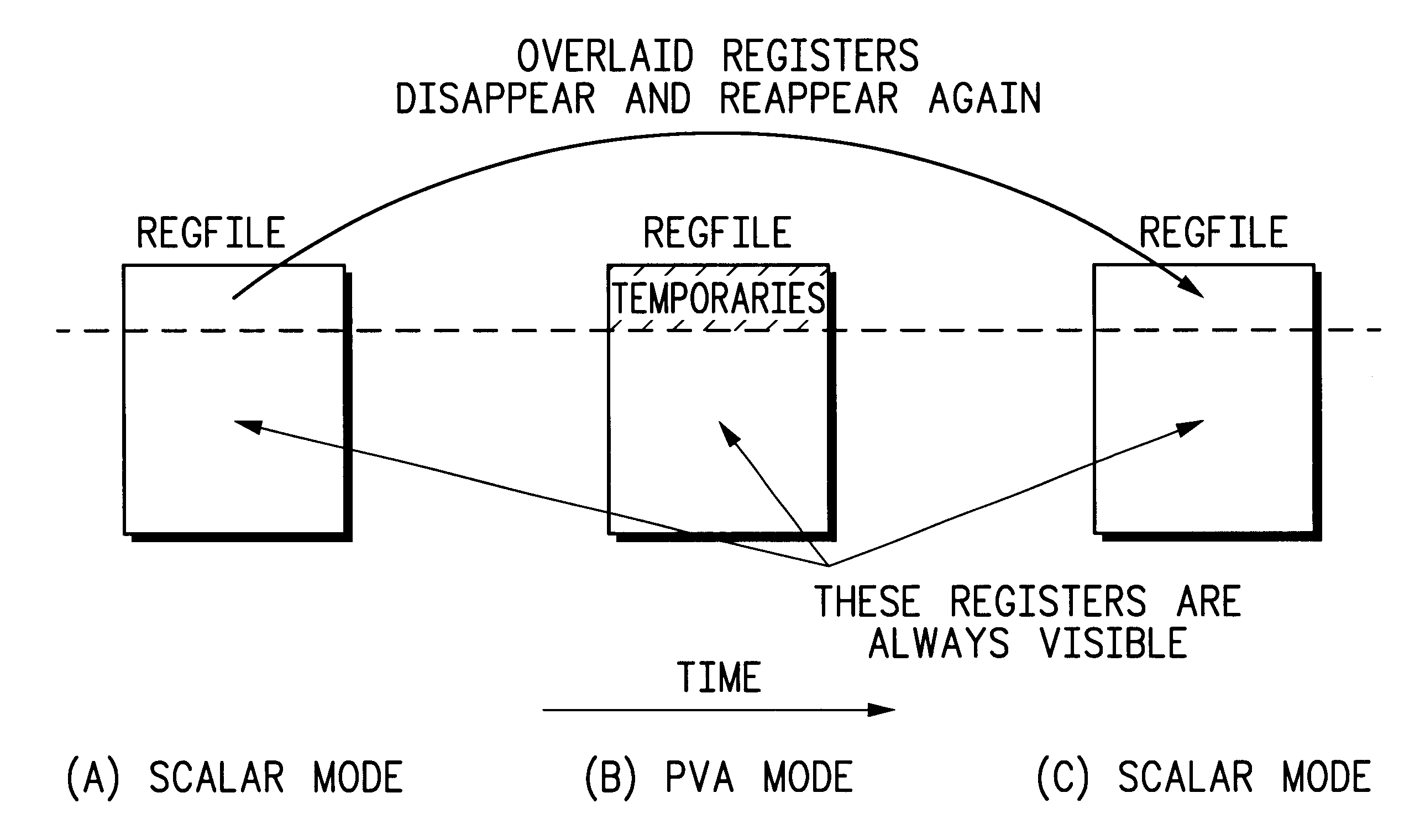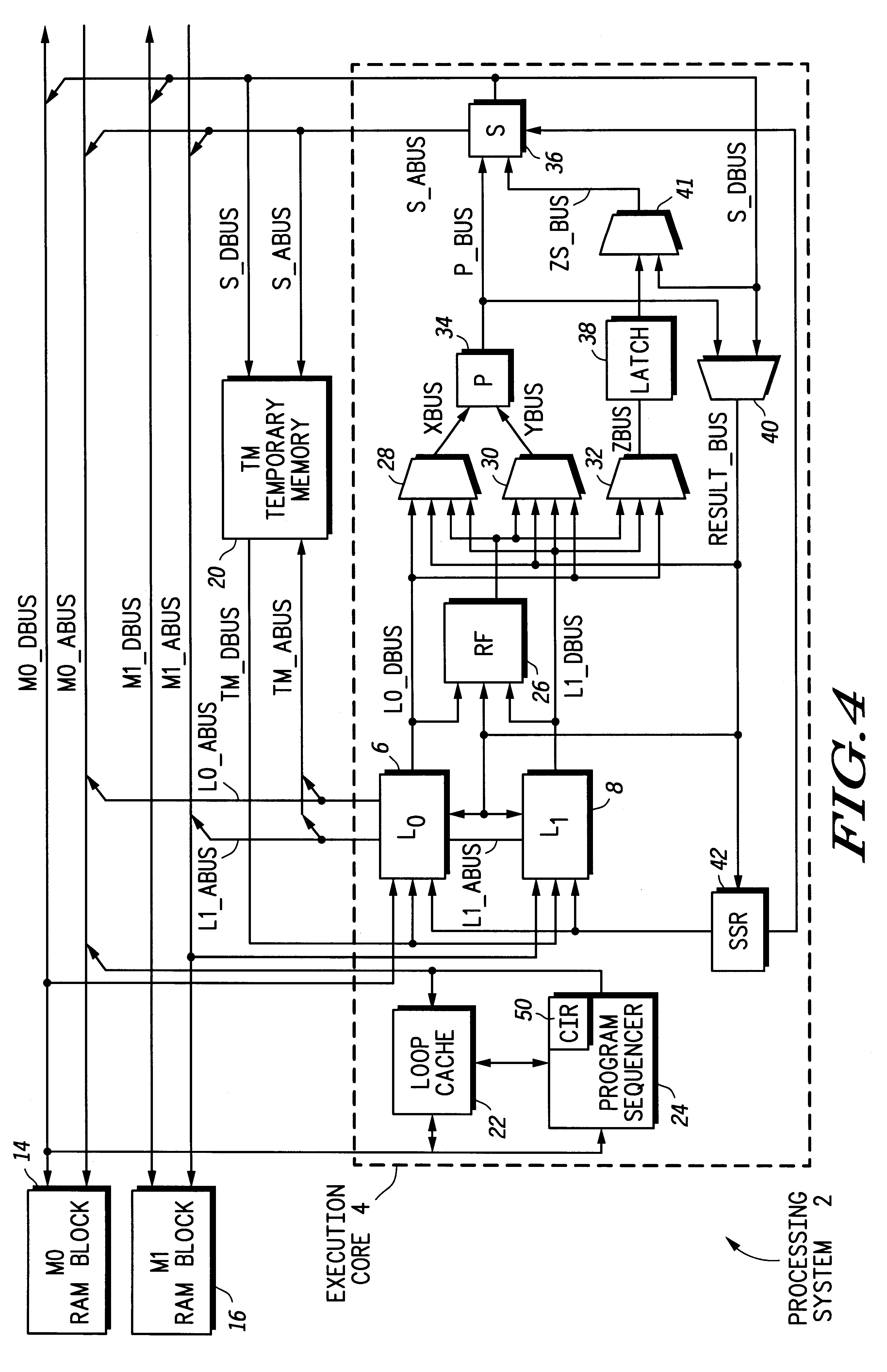Method and apparatus for instruction execution in a data processing system
a data processing system and instruction technology, applied in the direction of instruments, program control, computation using denominational number representation, etc., can solve the problems of high hardware and development costs of dual core systems, difficult vectorization of other loops, and ineffective approach for highly vectorizable loops
- Summary
- Abstract
- Description
- Claims
- Application Information
AI Technical Summary
Problems solved by technology
Method used
Image
Examples
example 2
The vector operation can be described by:
C[i]=(lsr(A[i], R9).vertline.lsl(A[i], R8))
This loop reads in a vector, A, one element at a time, and performs a logical shift right ("lsr") and a logical shift left ("lsl") operation on each element. An "or" function is performed on the results of the two shift operations and the result is written to a destination vector, C. This loop can be vectorized as follows.
Some initialization code
Some initialization code
The loop of Example 2 is vectorized by using two compound CVA instructions. The first CVA instruction performs, a "lsr" operation on the source vector A and produces a temporary vector. The second CVA instruction has "lsl" as its primary arithmetic and "or" as its secondary arithmetic. This latter instruction reads in the temporary vector via L.sub.0 and performs a "lsl" operation on it. It also reads the original source vector A via L.sub.1 and performs an "or" function with the results produced from the primary arithmetic. It then wr...
example 3
The corresponding high level source code for this loop is shown below.
This loop performs an element-wise compare between vectors A and B. This loop exits as soon as A[i]>B[i], for some i. If no such pair of elements exists, then all elements of vectors A and B will be processed before the loop exits.
If a program loop performs certain arithmetic functions on a fixed length vector(s), and it is possible for the computation to terminate even before the last element(s) of the vector(s) is(are) being processed, then such an operation is called a vector arithmetic with early termination.
In a vector arithmetic with early termination, there are two terminating conditions: (i) when all the elements of a source vector have been processed; (ii) when certain arithmetic condition is met. The latter condition could be met prior to the last vector element being processed, and is usually data dependent and not determined a priori.
The loop shown in Example 3 is a vector arithmetic with early termina...
example 4
The high level source code for the above loop is shown below.
This loop can be vectorized using a PVA construct, as follows.
In this loop, the L.sub.0 and S streams are enabled, but not the L.sub.1 stream. The PVA loop size is three instructions. On each iteration, the "cmplt" instruction reads R0 (or an element A[i]) and compares it against a constant value 16 that is stored in R6. The "movt" instruction conditionally moves R4 to R2, if the c bit (or the condition code) is set. Otherwise, it moves R2 to R2 with the value unchanged.
The "movt" instruction is located at the "cs-store" label within the loop body. A cs-store operation via the S stream is automatically initiated whenever this "movt" instruction is executed. The data used for this cs-store operation is the same data written back by the "movt" instruction. When executing this PVA loop, the results produced by the "movt" instruction are driven onto the p_bus by P 34, and constantly written back to RF 26 via multiplexor 40 and...
PUM
 Login to View More
Login to View More Abstract
Description
Claims
Application Information
 Login to View More
Login to View More - R&D
- Intellectual Property
- Life Sciences
- Materials
- Tech Scout
- Unparalleled Data Quality
- Higher Quality Content
- 60% Fewer Hallucinations
Browse by: Latest US Patents, China's latest patents, Technical Efficacy Thesaurus, Application Domain, Technology Topic, Popular Technical Reports.
© 2025 PatSnap. All rights reserved.Legal|Privacy policy|Modern Slavery Act Transparency Statement|Sitemap|About US| Contact US: help@patsnap.com



